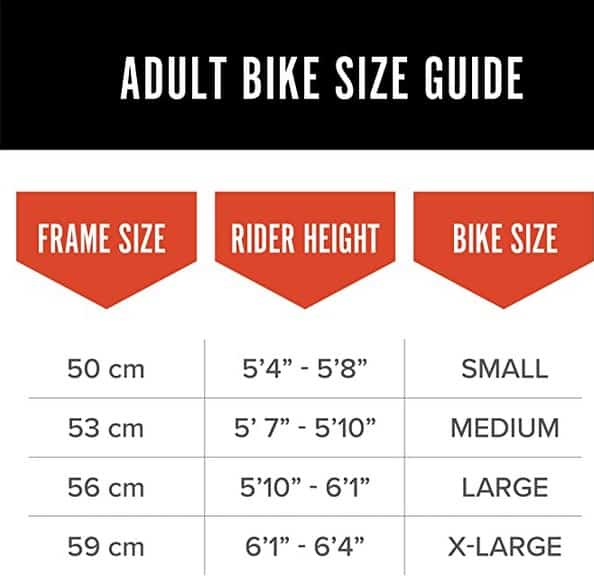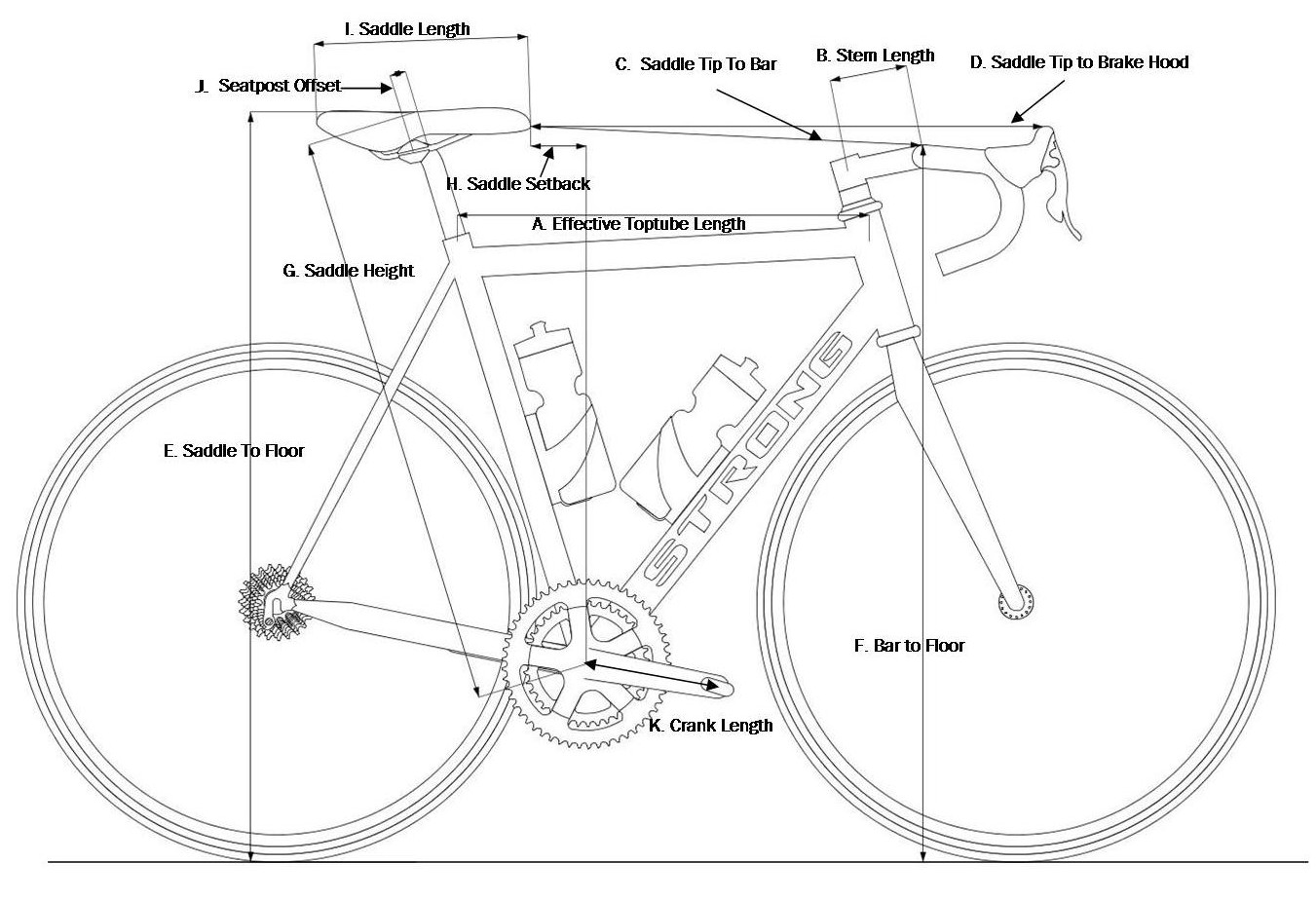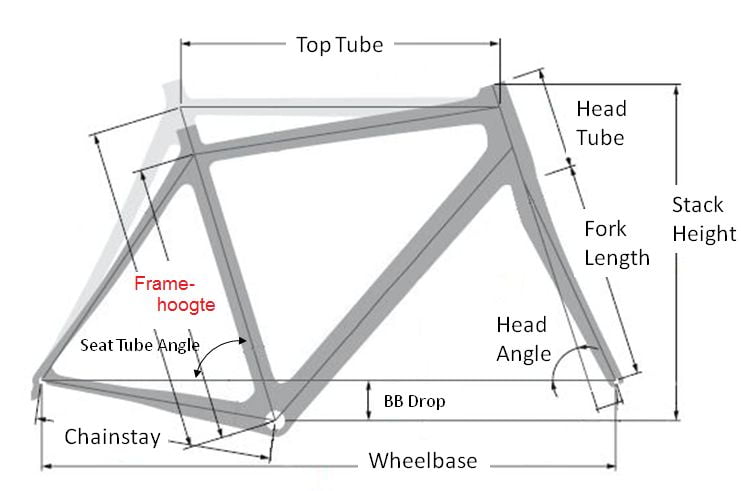Understanding Bike Frame Sizes: A Beginner’s Guide
Bike frame sizes can be a bit overwhelming, especially for beginners. With various types of frames, including road, mountain, hybrid, and more, it’s essential to understand the basics of bike frame sizes to ensure a proper fit. Bike frames are typically measured in inches or centimeters, and the size is usually indicated on the frame itself or on the manufacturer’s website.
There are several ways to measure bike frame size, including using a frame size chart, measuring the length of the seat tube, or using a combination of both. Frame size charts are available online or at local bike shops and provide a general guideline for determining the ideal frame size based on the rider’s height and inseam. However, it’s essential to note that frame size charts can vary between manufacturers, so it’s crucial to consult the specific chart for the bike you’re interested in.
In addition to frame size charts, measuring the length of the seat tube can also help determine the ideal frame size. The seat tube is the vertical tube that runs from the bottom bracket to the seat post, and its length can be used to determine the frame size. This method is particularly useful when purchasing a bike online or when the frame size chart is not available.
It’s also important to consider the type of bike and riding style when determining the ideal frame size. For example, road bikes typically have a more aggressive geometry and require a smaller frame size, while mountain bikes have a more relaxed geometry and require a larger frame size. Hybrid bikes, on the other hand, have a more upright geometry and require a frame size that falls somewhere in between.
By understanding the basics of bike frame sizes and how to measure them, riders can ensure a proper fit and enjoy a more comfortable and efficient ride. Whether you’re a seasoned cyclist or just starting out, knowing how to measure bike frame size is an essential skill that can make all the difference in your cycling experience.
How to Take Your Measurements: A Step-by-Step Guide
To determine your ideal bike frame size, you’ll need to take a few key measurements. These measurements will help you find a bike that fits your body and riding style. Here’s a step-by-step guide on how to take your measurements:
**Step 1: Measure Your Height**
Stand against a wall with your feet shoulder-width apart and your back straight. Measure the distance from the floor to the top of your head. This will give you your overall height. Make sure to take this measurement in inches or centimeters, as this will be used to determine your bike frame size.
**Step 2: Measure Your Inseam**
Stand against a wall with your feet shoulder-width apart and your back straight. Measure the distance from the floor to the crotch seam of your pants. This will give you your inseam measurement. Again, make sure to take this measurement in inches or centimeters.
**Step 3: Measure Your Arm Length**
Hold your arm straight out to the side, with your palm facing downwards. Measure the distance from the center of your back to the tip of your middle finger. This will give you your arm length measurement.
**Step 4: Use Your Measurements to Determine Your Bike Frame Size**
Once you have your measurements, you can use a bike frame size chart to determine your ideal frame size. Most bike manufacturers provide frame size charts on their websites or in their stores. Simply match your measurements to the corresponding frame size, and you’ll have a good idea of what size bike you need.
Remember, these measurements are just a starting point. The best way to ensure a proper fit is to visit a local bike shop and get a professional fitting. The staff at the bike shop can help you find the perfect bike and make any necessary adjustments to ensure a comfortable and efficient ride.
Using a Bike Frame Size Chart: Tips and Tricks
Once you have your measurements, it’s time to use a bike frame size chart to determine your ideal frame size. A bike frame size chart is a table that lists the corresponding frame sizes for different measurements. Most bike manufacturers provide frame size charts on their websites or in their stores.
To use a bike frame size chart, follow these steps:
1. Find the chart: Look for the frame size chart on the manufacturer’s website or in their store. Make sure it’s specific to the type of bike you’re interested in (e.g. road, mountain, hybrid).
2. Match your measurements: Match your height, inseam, and arm length measurements to the corresponding frame sizes on the chart.
3. Consider your riding style: Take into account your riding style and the type of bike you’ll be using. For example, if you’ll be riding aggressively, you may want a smaller frame size to improve handling.
4. Adjust for different types of bikes: Different types of bikes have different frame geometries, so you may need to adjust the frame size accordingly. For example, a road bike may require a smaller frame size than a mountain bike.
5. Check the manufacturer’s recommendations: Check the manufacturer’s recommendations for the ideal frame size based on your measurements and riding style.
By following these steps, you can use a bike frame size chart to determine your ideal frame size and find a bike that fits your body and riding style.
It’s also important to note that bike frame size charts can vary between manufacturers, so it’s crucial to consult the specific chart for the bike you’re interested in. Additionally, some manufacturers may offer custom frame sizes or adjustments, so be sure to check their website or visit a local bike shop for more information.
Real-World Examples: How to Measure Your Bike Frame Size with Popular Bikes
To illustrate how to measure your bike frame size, let’s take a look at some real-world examples using popular bikes. We’ll use the Trek Domane, Specialized Roubaix, and Giant TCR as examples.
**Trek Domane**
The Trek Domane is a popular endurance road bike. To measure the frame size, you’ll need to take the following measurements:
* Height: 5’9″ (175 cm)
* Inseam: 31″ (79 cm)
* Arm length: 24″ (61 cm)
Using the Trek frame size chart, we can determine that the ideal frame size for this rider is a 56cm frame.
**Specialized Roubaix**
The Specialized Roubaix is a popular endurance road bike. To measure the frame size, you’ll need to take the following measurements:
* Height: 5’11” (180 cm)
* Inseam: 32″ (81 cm)
* Arm length: 25″ (63 cm)
Using the Specialized frame size chart, we can determine that the ideal frame size for this rider is a 58cm frame.
**Giant TCR**
The Giant TCR is a popular road bike. To measure the frame size, you’ll need to take the following measurements:
* Height: 5’8″ (173 cm)
* Inseam: 30″ (76 cm)
* Arm length: 23″ (58 cm)
Using the Giant frame size chart, we can determine that the ideal frame size for this rider is a 54cm frame.
These examples illustrate how to measure your bike frame size using popular bikes. By taking the necessary measurements and using the manufacturer’s frame size chart, you can determine your ideal frame size and find a bike that fits your body and riding style.
Common Mistakes to Avoid When Measuring Your Bike Frame Size
Measuring your bike frame size can be a straightforward process, but there are some common mistakes to avoid. By being aware of these mistakes, you can ensure that you get an accurate measurement and find a bike that fits you perfectly.
**Measuring Incorrectly**
One of the most common mistakes people make when measuring their bike frame size is measuring incorrectly. This can happen if you don’t take the time to read the instructions carefully or if you’re not sure what you’re doing. To avoid this mistake, make sure to read the instructions carefully and take your time when measuring.
**Not Considering Riding Style**
Another mistake people make is not considering their riding style when measuring their bike frame size. Different riding styles require different frame sizes, so it’s essential to take this into account when measuring. For example, if you’re a road cyclist, you’ll need a smaller frame size than if you’re a mountain biker.
**Not Adjusting for Different Types of Bikes**
Not adjusting for different types of bikes is another common mistake people make when measuring their bike frame size. Different types of bikes have different frame geometries, so it’s essential to take this into account when measuring. For example, a road bike will have a different frame geometry than a mountain bike.
**Not Using a Frame Size Chart**
Not using a frame size chart is another mistake people make when measuring their bike frame size. A frame size chart can help you determine your ideal frame size based on your measurements. By using a frame size chart, you can ensure that you get an accurate measurement and find a bike that fits you perfectly.
By avoiding these common mistakes, you can ensure that you get an accurate measurement and find a bike that fits you perfectly. Remember to take your time when measuring, consider your riding style, adjust for different types of bikes, and use a frame size chart to ensure that you get the best fit possible.
Getting a Professional Fit: When to Seek Help from a Bike Shop
While measuring your bike frame size can be a straightforward process, there are situations where it’s best to seek help from a professional bike fitter. A professional bike fitter can provide a more accurate fit and help you find the perfect bike for your needs.
**When to Seek Help**
There are several situations where it’s best to seek help from a professional bike fitter:
* You’re unsure about your measurements: If you’re not sure how to take your measurements or if you’re unsure about your frame size, a professional bike fitter can help.
* You need a custom fit: If you have a unique body shape or riding style, a professional bike fitter can provide a custom fit that meets your needs.
* You’re looking for a high-performance bike: If you’re looking for a high-performance bike, a professional bike fitter can help you find the perfect bike and ensure that it’s fitted to your body.
**What to Expect from a Professional Bike Fitter**
A professional bike fitter will typically start by taking your measurements and discussing your riding style and preferences. They will then use this information to recommend a bike that meets your needs and provide a custom fit.
**Benefits of a Professional Fit**
A professional fit can provide several benefits, including:
* Improved comfort: A professional fit can ensure that your bike is comfortable and supportive, reducing the risk of injury and discomfort.
* Improved efficiency: A professional fit can help you ride more efficiently, reducing fatigue and improving your overall performance.
* Increased confidence: A professional fit can give you the confidence to ride more aggressively and push yourself to new limits.
By seeking help from a professional bike fitter, you can ensure that you get the perfect fit for your needs and enjoy a more comfortable and efficient ride.
Conclusion: Finding Your Perfect Fit for a Comfortable and Efficient Ride
Measuring your bike frame size is a crucial step in finding a comfortable and efficient ride. By following the steps outlined in this guide, you can ensure that you get the perfect fit for your needs. Remember to take your time when measuring, consider your riding style, and adjust for different types of bikes.
Proper bike fit is essential for a comfortable and efficient ride. A bike that is too small or too large can lead to discomfort, fatigue, and even injury. By taking the time to measure your bike frame size, you can ensure that you get a bike that fits your body and riding style.
In addition to measuring your bike frame size, it’s also important to consider other factors that can affect your ride. These include the type of bike, the terrain, and your personal preferences. By taking these factors into account, you can find a bike that meets your needs and provides a comfortable and efficient ride.
By following the tips and guidelines outlined in this guide, you can find your perfect fit and enjoy a comfortable and efficient ride. Remember to always prioritize proper bike fit and take the time to measure your bike frame size to ensure a safe and enjoyable ride.
Conclusion: Finding Your Perfect Fit for a Comfortable and Efficient Ride
Measuring your bike frame size is a crucial step in finding a comfortable and efficient ride. By following the steps outlined in this guide, you can ensure that you get the perfect fit for your needs. Remember to take your time when measuring, consider your riding style, and adjust for different types of bikes.
Proper bike fit is essential for a comfortable and efficient ride. A bike that is too small or too large can lead to discomfort, fatigue, and even injury. By taking the time to measure your bike frame size, you can ensure that you get a bike that fits your body and riding style.
In addition to measuring your bike frame size, it’s also important to consider other factors that can affect your ride. These include the type of bike, the terrain, and your personal preferences. By taking these factors into account, you can find a bike that meets your needs and provides a comfortable and efficient ride.
By following the tips and guidelines outlined in this guide, you can find your perfect fit and enjoy a comfortable and efficient ride. Remember to always prioritize proper bike fit and take the time to measure your bike frame size to ensure a safe and enjoyable ride.
Now that you know how to measure your bike frame size, it’s time to take the next step and find your perfect fit. Visit a local bike shop, consult with a professional bike fitter, or use online resources to find the perfect bike for your needs. With the right fit, you’ll be able to ride with confidence and enjoy the many benefits of cycling.







